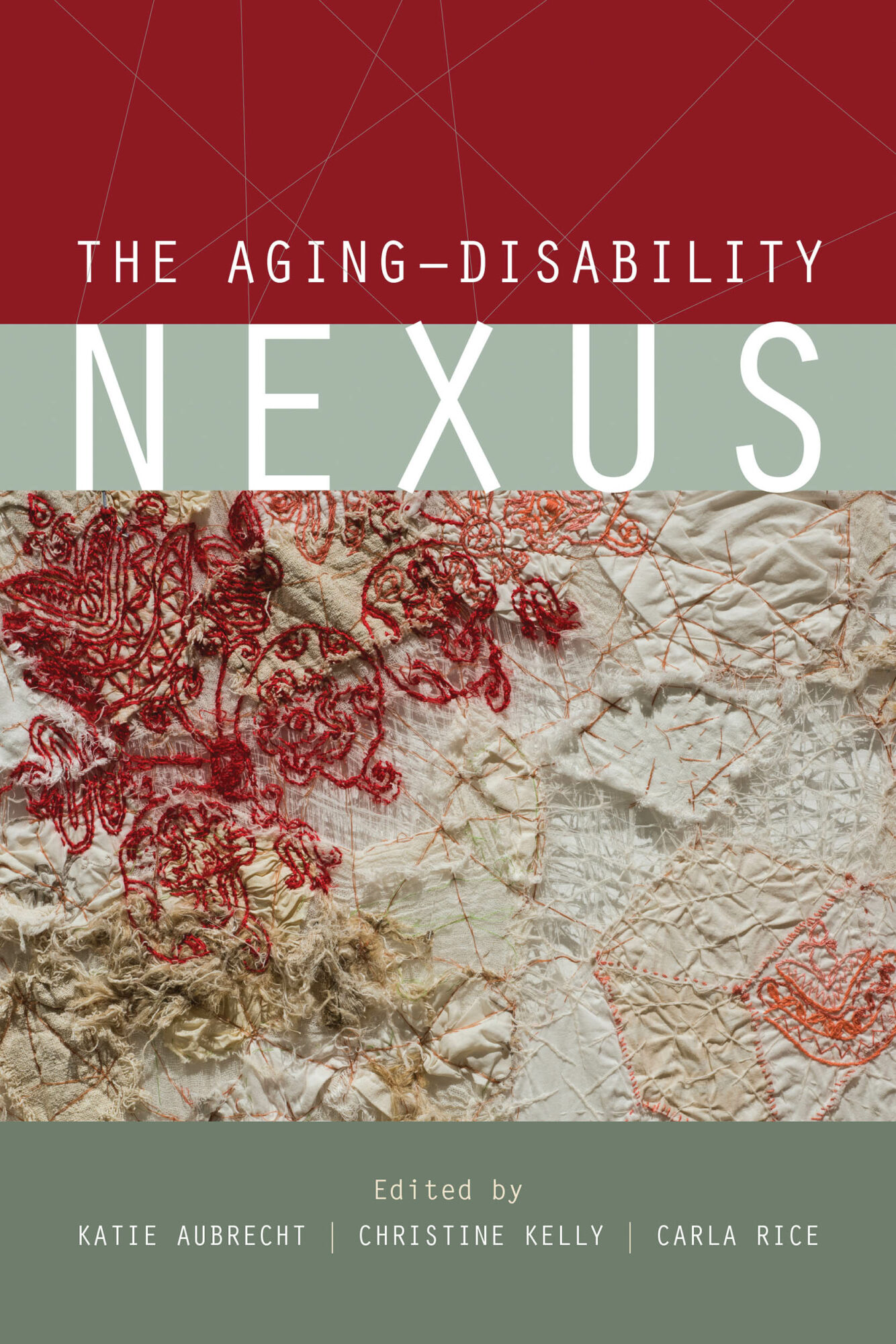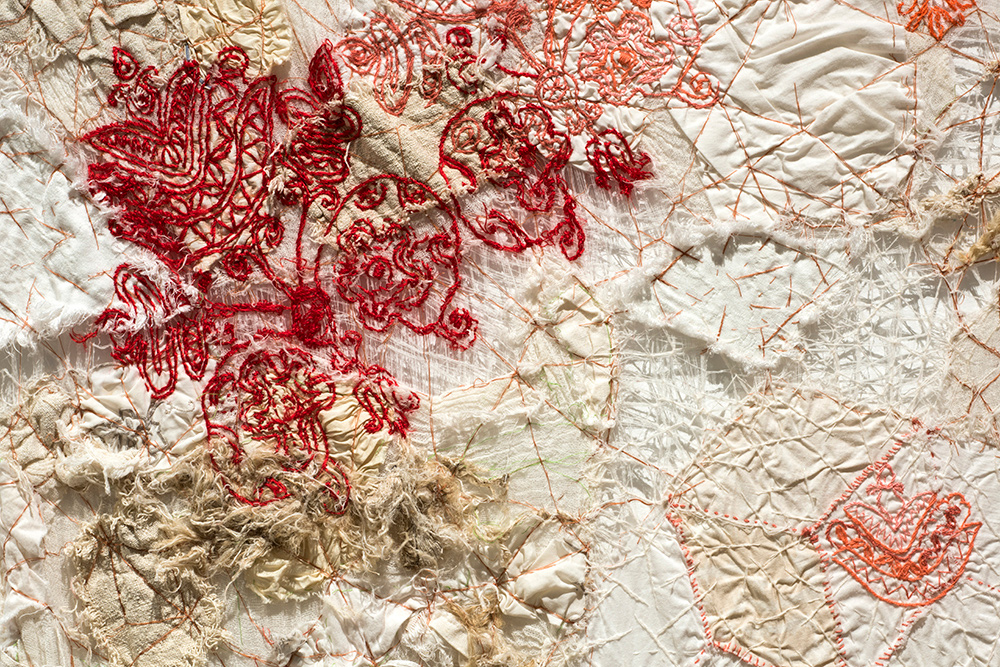Learning Objectives
- To learn about the connection between aging and disability.
- To consider how art can illuminate the intertwined experiences of disability and aging.
- To engage with questions about the relationship between aging, disability and death.
- To think about the ways that researchers have tried to bridge the gap between the academic fields of critical disability studies and cultural gerontology.
The Aging/Disability Nexus Symposium
BIT explored the connection between aging and disability through the Aging/Disability Nexus symposium, hosted by the School of Disability Studies at Toronto Metropolitan University (formerly Ryerson) in Toronto in 2017. The overall goal of the Aging/Disability Nexus symposium was to bring together leading and emerging scholars in disability studies and cultural gerontology/critical aging studies to consider the empirical, theoretical, and methodological overlaps of these fields. This event helped to develop new perspectives and create opportunities for policy and curricular advancement.
The Aging-Disability Nexus Book

The cover of the book “The Aging-Disability Nexus”. Below the title, there is a close-up of a textile art piece in light browns and red. The text below it reads “Edited by Kate Aubrecht, Christine Kelly, Carla Rice”.
The artistic and activist energies and necessary disruptions to normative, colonial, ageist, and ableist understandings that emerged from the symposium are captured in the The Aging-Disability Nexus book.
Pages of book preview displayed by permission of UBC Press.
View the Documentary
Please watch this short documentary to hear from some of the contributors about the critical questions raised by the symposium and book.
Death Cafe
One of the ways we collectively re-imaged aging at the Aging/Disability Nexus symposium was by leaning into the relationship between aging and death in a Death Cafe hosted by Eliza Chandler, Esther Ignagni, and Kim Collins. Death Cafes are salon-style conversations about death, which are conversations often muted in secular, western/ized cultures and are typically guided by questions aimed to animate personal, collective, cultural, political, and/or spiritual exchanges and discussions. Chandler, Ignagni, and Collins had been using the Death Cafe format to host informal conversations within disability communities about the intersection of disability and death in the wake of the passage of Canada’s medical assistance in dying (MAiD) legislation, Bill C-14, in 2016. As many disability activists have pointed out, introducing MAiD legislation before a federal accessibility act was passed made it easier for disabled people to access death than to access life. Disability studies and culture often claim “vitality” because it may be too risky, or even deadly, to have conversations about disability and death. But what do we lose when we don’t have these conversations? What perspectives, strategies, and critiques fail to surface? Death Cafes provide space for these difficult conversations and open opportunities to build intra-community and cross-community solidarity.
Reflection Questions
These are some of the questions that were asked during the Death Cafe hosted at the Aging/Disability Nexus symposium. They may be useful questions to bring into your classrooms to open up conversations about the intersections of disability, aging, and death.
As these questions might invoke difficult conversations, unexpected emotions, and active grief, we recommend you practice care when using them in an educational setting. You might do this by announcing when the Death Cafe will occur and describing what it is well in advance of it taking place, giving students the option to attend or opt out. We also recommend not assigning a grade (including participation or attendance grades) for this in-class activity. You may also want to provide information for university and community-based grief counselling resources.
New Meanings of Aging and Disability
The Aging-Disability Nexus book emerged from a recognition of the surprising gap in scholarship between disability studies and aging studies even though there is significant conceptual overlap between the two fields given that many people age into disability. Speaking to the scholarly gap that The Aging-Disability Nexus fills, editors Katie Aubrecht, Christine Kelly, and Carla Rice (2020) write,
Most scholars and researchers, whether situated in disability studies or in aging studies, have yet to consider in a comprehensive or substantive way the development of truly interdisciplinary and intersectional scholarship that focuses on the nexus of disability and aging.
(The Aging-Disability Nexus, p. 5)
The Aging-Disability Nexus (UBC Press, 2020) is an interdisciplinary collection of essays edited by Katie Aubrecht, Christine Kelly, and Carla Rice. This book is the third volume in the series Disability Culture and Politics, co-edited by BIT researchers Christine Kelly and Michael Orsini and published by UBC Press. As co-editors Aubrecht, Kelly, and Rice (2020) describe, the essays in this book provide “a richly theoretical yet accessible anthology that can inform public engagement, cultural creation, education, policy, and practice while also serving as a primer for students, scholars, artists, and activists working at the intersection of aging and disability” (p. 6). The book’s contributors blend theories and practices of disability arts, feminist arts, and community arts in innovative and thought-provoking ways to explore how arts can refigure bodies/minds of difference. These scholarly and coalitional crossings inspire new relations to the nexus of aging and disability.
Cumulative Questions
After working your way through this section, consider these questions suited for individual reflection, small group work, a large group discussion, or online discussion forums. These questions can also be used to reflect on various chapters in The Aging-Disability Nexus book.
- Drawing on examples from this module and The Aging-Disability Nexus book, how are normative conceptions of aging shaped through ableist, colonial, and neoliberal logics? How do these conceptions uphold and perpetuate these normative logics?
- What might narratives of aging and disability offer us that are not captured in normative accounts of aging? What is the benefit of thinking through the aging-disability continuum through a first-person perspective?
- What are the affordances of thinking about aging and disability as related and entangled embodied processes?
- Drawing on examples from this module and The Aging-Disability Nexus book, how might art and narrative open up necessary political (and often hidden) conversations about disability and dementia and suffering and death?
- What can disability studies offer aging studies and vice versa? How might you bring together aging studies and disability studies in your own scholarly, community, and/or professional practice and to what ends?
- What are the scholarly and societal impacts of operationalizing intersectionality within aging and disability scholarship and politics? For instance, how might working with an understanding of this nexus change how we think about necropolitics? How might an understanding of this nexus impact how we write and enact policy (e.g., how we fund long term care facilities and invest in accessible housing and legislation, such as Bill C-81), and legislation (e.g., Canada’s accessibility legislation, and Bill C-14, Canada’s medical assistance in dying legislation)?
A close up view of a textile artworks. This textile shows details of red, pink, and white stitches layered on top of each other to form a decorative honeycomb pattern with a traditional Hungarian flower pattern embroidered in red thread. (Anna Torma with Ilona Klocza, Red Fragments, 2017 Textile assemblage with Hungarian folk art, commercial and silkscreen prints, women’s handiwork, hand embroidery on North American quilt patterns (touchable) 200 cm x 30 ft.)






